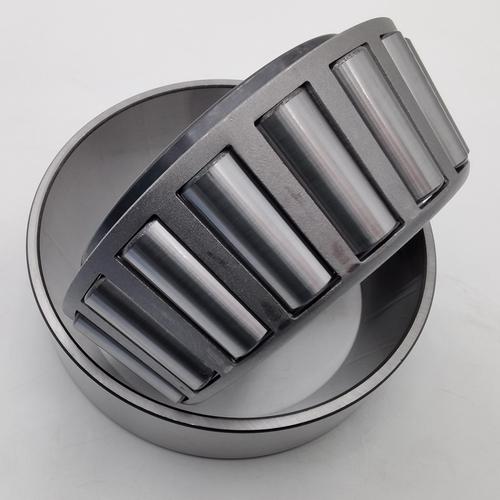Top 5 Roller Bearings Applications in Modern Industries: A Comprehensive Guide
Roller bearings are critical components in mechanical systems, designed to reduce friction and support radial or axial loads. Their cylindrical rolling elements make them ideal for high-capacity applications across industries like automotive, manufacturing, and energy production. This article explores key industrial uses where roller bearings deliver optimal performance and reliability.
1、roller bearings in industrial machinery2、automotive applications of roller bearings
3、aerospace roller bearing solutions
4、medical equipment roller bearings
5、roller bearings in wind turbines
1. roller bearings in industrial machinery

Roller bearings are fundamental in industrial machinery, particularly in conveyor systems, gearboxes, and heavy-duty equipment. Their ability to handle substantial radial loads makes them essential for manufacturing assembly lines. In steel production mills, spherical roller bearings compensate for shaft misalignment under extreme temperatures. Tapered roller bearings in hydraulic pumps withstand combined loads while maintaining precision. Paper manufacturing machines utilize cylindrical roller bearings to support high-speed rollers. These applications demand bearings with superior heat resistance, lubrication retention, and contamination protection – all features optimized in modern industrial roller bearing designs.
2. automotive applications of roller bearings
Automotive systems rely heavily on tapered and needle roller bearings for critical components. Wheel hubs employ double-row tapered roller bearings to manage vehicle weight and cornering forces. Transmission systems use needle roller bearings for compact space efficiency in gear support. Universal joints in drive shafts depend on cross-tapered roller bearings for smooth power transmission. Recent advancements include ceramic hybrid roller bearings in electric vehicle motors, reducing electrical arcing risks while improving thermal performance. Automotive engineers prioritize low-friction bearing designs to enhance fuel efficiency, with many manufacturers adopting advanced sealing technologies to extend bearing life in harsh operating environments.
3. aerospace roller bearing solutions
Aerospace applications demand roller bearings that withstand extreme conditions while maintaining precision. Jet engine turbine shafts utilize specialized cylindrical roller bearings capable of operating at 15,000 RPM under 300°C temperatures. Aircraft landing gear systems employ tapered roller bearings engineered to absorb massive impact loads during touchdown. Spacecraft mechanisms require vacuum-compatible roller bearings with solid lubricants to prevent outgassing. Manufacturers implement advanced materials like M50 tool steel and silicon nitride ceramics to meet these challenges. Strict certification processes ensure aerospace roller bearings maintain performance through thermal cycling, vibration stress, and prolonged storage periods while minimizing weight – a critical factor in aviation design.
4. medical equipment roller bearings
Medical devices require ultra-clean, precision roller bearings for reliable operation. MRI machines use non-magnetic ceramic roller bearings to prevent imaging interference. Surgical robots employ miniature tapered roller bearings with backlash-free rotation for precise instrument control. Centrifugal blood separators utilize high-speed cylindrical roller bearings meeting ISO Class 5 cleanliness standards. Dental drill handpieces incorporate ceramic hybrid roller bearings sterilizable through autoclave processes. These medical-grade bearings feature special coatings like titanium nitride to resist chemical corrosion from disinfectants. Manufacturers must comply with FDA regulations and ISO 13485 standards, prioritizing smooth operation and particulate containment in life-critical healthcare applications.
5. roller bearings in wind turbines
Wind energy systems depend on large-scale roller bearings engineered for durability. Main shaft arrangements in multi-megawatt turbines use spherical roller bearings accommodating shaft deflection and misalignment. Gearboxes employ planetary tapered roller bearings to handle fluctuating torque loads from rotor blades. Pitch control systems utilize four-point contact roller bearings for precise blade angle adjustment. Offshore turbines require triple-sealed roller bearings with enhanced corrosion resistance. Manufacturers implement advanced condition monitoring systems with embedded sensors to track bearing temperature and vibration. The renewable energy sector drives innovation in bearing materials, with case-hardened steels and polymer cages improving performance in low-maintenance, high-reliability wind turbine applications.
From automotive transmissions to wind turbine gearboxes, roller bearings prove indispensable across industries. These five applications demonstrate how proper bearing selection impacts equipment efficiency and longevity. Whether optimizing medical imaging precision or ensuring aircraft safety, engineers must consider load capacity, environmental factors, and maintenance requirements. Emerging technologies like smart bearings with embedded sensors and advanced lubrication systems continue pushing performance boundaries. Understanding these key applications helps professionals make informed decisions when implementing roller bearing solutions in their mechanical systems.
This comprehensive guide has explored roller bearing implementations in crucial industrial sectors. The discussed applications highlight their versatility in handling extreme loads, temperatures, and operational demands. Proper maintenance practices and technological advancements ensure these components remain vital to modern machinery. As industries evolve, roller bearing innovations will continue supporting more efficient and reliable equipment designs worldwide.




 13869596835
13869596835